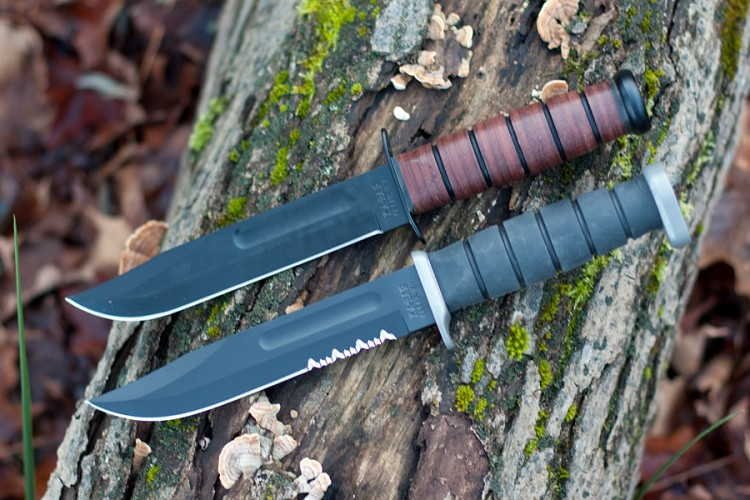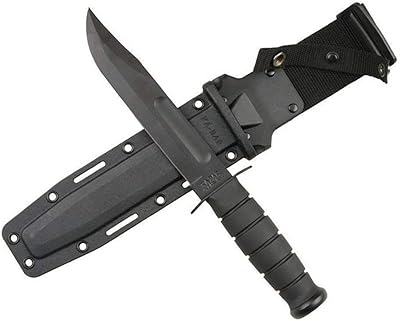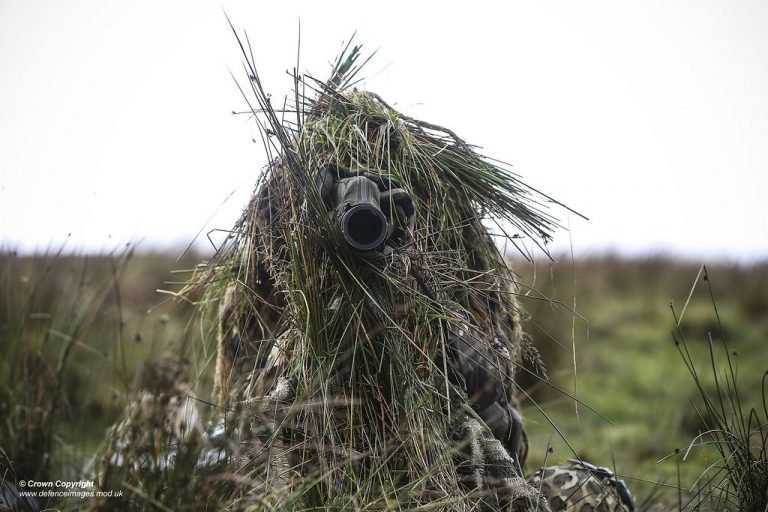Serrated Edge vs. Straight Edge Knife
“Should I get a knife with a serrated edge or a plain edge?”
“How do I decide which blade edge to get?”
“Any Recommendation for serrated edge vs. straight edge?”
These are some of the most commonly asked questions when people are looking for knives that meet their needs.
These knives can be survival knives, tactical knives, hunting knives, or any outdoor related knives. Although there are certain blade edges that are preferred for different niches (i.e., partially serrated for survival, straight edge for combat, etc.), the blade edge you should pick depends on your needs. So if you are not sure which type of blade edge is best for you, this article will help you make a right decision.
But let’s start with a short version, just in case you don’t feel like going through the entire article (but I highly recommend you read through it). Here are the tips for choosing blade edge:
- Pick straight edge if you make “push” cuts most of the time.
- Pick serrated edge if you need to slice thick, hard, and tough objects.
- Pick coarse-ground (micro-serrated) edge if you need to slice soft objects (i.e., ropes).
- Pick partially serrated edge if you are looking for an all-in-one knife and you need a knife that can do the tasks for both straight edge and serrated edge.
Before I get into more detail, I just would like to say that this is article is NOT the typical article that just mentions a few facts about serrated edge and straight edge.
In fact, we will talk about 4 types of edges and compare their pros and cons. Then we will go into things to consider to find the edge that meets your needs.
The 4 types of blade edges are:
- Straight edge
- Coarsely-ground straight edge
- Serrated edge
- Partially serrated edge
Straight Edge
Straight edge is one of the most common blade edges. It used to be the default choice for many knives, but the partially serrated edge is gaining popularity quickly. This type of blade edge is the sharpest and can do serious damage if used properly. Straight edge is functional, versatile, and great for most of the tasks you will have, but it still falls short on some functions. Let’s look at the Pros and Cons of straight edge knife.
Pros:
- Better precision and control when using the knife, thanks to the extremely sharp edge.
- It can be easily sharpened. Depending on the types of the steel, the frequency of sharpening might vary.
Cons:
- Not able to hold an edge for long. Typically a knife that can be sharpened easily won’t hold the edge very well. It’s true when comparing straight edge to serrated edge. Straight edge knife usually requires more frequent sharpening than the serrated knife.
- Slower and less effective in slicing through thick or tough materials.
Recommended use:
For shaving, skinning animals, chopping woods, or applications that require “push” cuts.
Click Here To Get The Best Straight Edge Knife From Amazon
Coarse-Ground Straight Edge (Micro-Serrated Edge)
This blade edge is a variation to the well-polished straight edge knife. It can be done by sharpening a plain edge knife with a coarse stone to form “micro serrations” on edge.
Pros:
- Retain most of the advantages of the straight edge.
- Great for cutting ropes or other “soft” materials.
Cons:
- The sharpening process can cause damage to the blade if not done properly.
- The micro serration reduces the effectiveness of push cuts.
Recommended use:
Cutting ropes.
Click Here To Get The Best Coarse Sharpening Stone
Serrated Edge

Pros:
- Retain its edge longer. This also means it requires less sharpening.
- Less applied pressure on the object (i.e., bread) when cutting. This means less distortion to its shape (think of slicing through a loaf of bread, less “squish” when using a serrated knife).
- Better control and more effective for slicing through thick, hard materials.
- Capable of doing greater damage through the saw-like edge in combat (which can tear the wounds apart)
Cons:
- Less precise and harder to control for general uses, owing to the less sharp edge.
- Difficult to sharpen.
- The serrated edge might get tangled with cloth, fur, or skin and reduce its effectiveness.
Recommended use:
Slicing bread, ropes, or cut through thick woods or cardboards. It’s also great for cutting materials with a hard shell and soft insides.
Click Here To Get The Best Serrated Edge Knife
Partially Serrated Edge
This type of edge tries to combine the best characteristics of both straight edge and serrated edge. Typically, the top 50% to 60% of the blade is straight edge, with a sharp point. The lower 50% to 40% of the edge is serrated for heavy slicing. This type of design has gained tremendous popularity in outdoor knives, especially in survival knives. But it’s still not perfect. Let’s look at the Pros and Cons of partially serrated edge.
Pros:
- Convenient: combine the pros of two different blade edges into one.
- Very functional: Sharp top edge for push cut, serrated bottom edge for heavy slicing.
Cons:
- This design might not work well with a short blade (i.e., 3″ or less). Each blade type needs a certain length to be useful. Combining both edges onto one short edge might lose all the advantages and make it not suitable for any use.
- Placement of the straight and serrated edge might not be ideal. Certain tasks might require serrated edge on top and straight edge at the bottom, which is rarely seen on partially serrated edge.
Recommended use:
People who don’t have a bias towards their knife use (or those who wants all the advantages of both edges in one knife). People who value the option of carrying just one knife.
Click Here To Get The Best Partially Serrated Knife
Questions You Need To Ask Before Choosing The Right Blade Edge
Now that we know the difference between each blade edge, let’s look at the 3 factors you need to consider before finding the best edge type for you:
What type of cutting will the knife be used for most of the time?
Push cuts, punching holes, precision cuts requires a sharp straight edge. The serrated edge is much more effective for slicing through leather, cardboard, or other thick and tough materials.
Any requirement for the speed of cutting?
The serrated edge will slice through seat belt and ropes much quicker, which make it ideal for emergency response team or survival and camping tasks with lots of ropes involved. If you want to skin an animal quickly or shave wood effectively, then the straight edge is the best way to go.
How will frequency you use the knife?
If you don’t need to use knife frequently, then any edge might work just fine. In fact, the partially serrated edge might be the best choice as it brings together the best of both types of edges.
If you find you frequently use your knife for a particular task, then finding the right edge becomes very important.
There you have it! 4 types of blade edge you need to know and how to choose the right one for you. So, what’s the edge of your choice? How do you use each type of blade?
Leave me a note and let me know what you think! Want to learn more? Click here for my complete guide to choosing the best knife for you.









